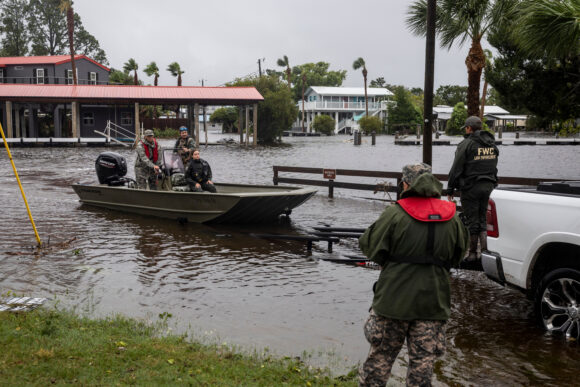Being able to predict the environmental risks that follow a major natural disaster represents an untapped business opportunity for the insurance sector, according to the head of reinsurance firm Swiss Re AG’s China unit.
Risks associated with catastrophes such as hurricanes are well understood, “because we have been modeling them a lot,” country president Beat Strebel said at the World Economic Forum’s annual meeting in Tianjin.
Insurers are less familiar with so-called “secondary perils”, or disasters that follow a major event — such as drought after wildfires, or flash floods in the wake of a hurricane. “We are still lacking data and good models to deal with those,” he said. “It’s a big business opportunity but it comes with challenges,” he added.
These lesser understood risks are increasingly becoming a source of insurance payouts as extreme weather events lead to billions in economic losses. Traditionally, reinsurers — which provide coverage to insurance companies — haven’t paid much attention to the distinction between secondary perils and larger catastrophes, but that is changing given the growing frequency.
The value of global assets exposed to climate risk is likely to grow by as much as 7% annually through the next 10 to 20 years, according to Strebel. “A concerning element is that most of these assets are not currently insured,” he said.
On average, just 40% of economic losses due to major environmental catastrophes are covered, said Strebel. In China that’s far lower, and of the $10 billion worth of infrastructure damages attributable to a super typhoon that struck Hainan island last year, just $300 million were insured, he said.
Photograph: Officers with the Florida Fish and Wildlife Commission return from looking for stranded residents after Hurricane Debby made landfall in Suwannee, Florida, US, on Monday, Aug. 5, 2024. Photo credit: Christian Monterrosa/Bloomberg
Topics Carriers
Was this article valuable?
Here are more articles you may enjoy.



 ‘Dream Is in Sight:’ Chamber, Reinsurers, Insurers Urge Florida to Stay the Course
‘Dream Is in Sight:’ Chamber, Reinsurers, Insurers Urge Florida to Stay the Course  Lawsuit Over Burger King’s Whopper Ads Set Back by Federal Judge
Lawsuit Over Burger King’s Whopper Ads Set Back by Federal Judge  Product Liability Verdicts Are on the Rise but There Are Ways to Avoid Them
Product Liability Verdicts Are on the Rise but There Are Ways to Avoid Them  Dozens of State Attorneys General Urge Congress Not to Block AI Laws
Dozens of State Attorneys General Urge Congress Not to Block AI Laws 

